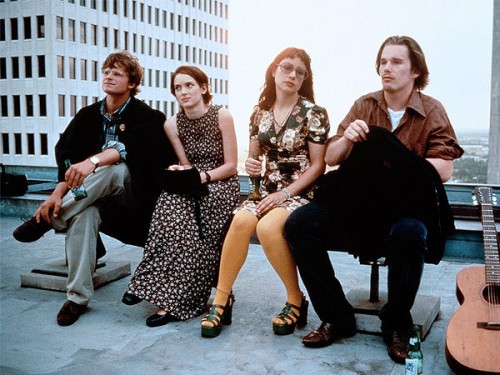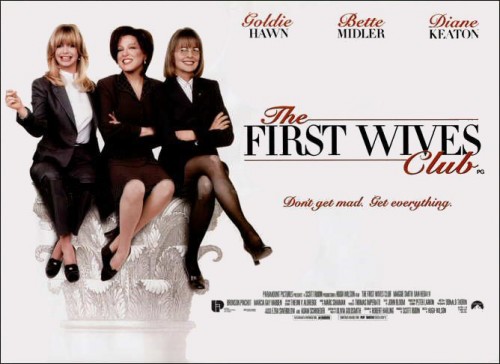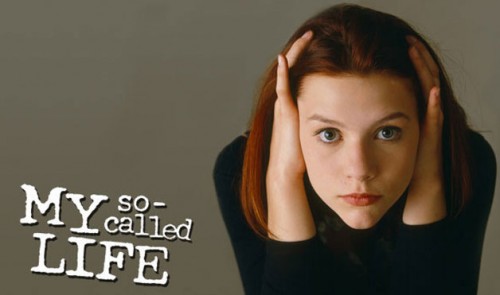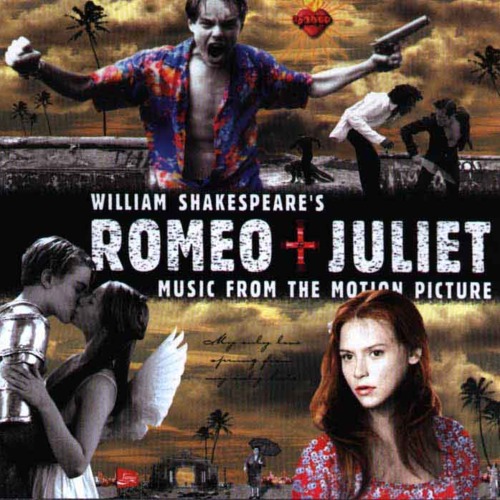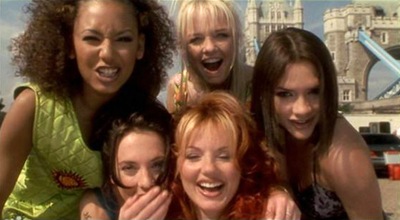This guest post by BJ Colangelo appears as part of our theme week on Black Families.
As a proud child of the 1990s, I was lucky enough to grow up with some of the best sitcoms on television. Perhaps my nostalgic love of these shows have clouded my view on whether or not these shows were any good, but I still stomp my curmudgeonly feet around and shout, “These kids today don’t know good TV!” I grew up in a lower-middle class family in an extremely diverse community, so I’ve always been exposed to multi-cultural families. Hell, my mom named my (white, red-headed) sister after a guest-starring character she loved on Hangin’ With Mr. Cooper. Disney Channel used to show re-runs of a lot of shows I loved growing up, and I distinctly remember running home off the bus to make sure I wouldn’t miss the “newest” episode of Smart Guy.
I. Loved. Smart. Guy. Growing up, I was a gifted child, so T.J. Henderson was a boy after my own heart. He was living the life I always dreamed of having. I probably wasn’t high school smart at 10 years old the way he was, but all I could think about was how awesome it would be to outsmart all of the older kids that picked on me for being so little. T.J. had a super-hip older sister named Yvette who was a staunch feminist and loved the fine arts. I saw a lot of myself in Yvette, even at a young age. T.J.’s older brother Marcus was the big man on campus, and I idolized how cool he was. The patriarch of the family was Floyd Henderson, the most caring father on TV (next to Danny Tanner of Full House), but was way, way cooler than Danny Tanner could ever hope to be.
One of the biggest criticsms people seem to give Smart Guy, is that it’s “racist” against white people. First of all, “reverse racism” doesn’t exist, so I’m not going to even go into that argument. However, critics tend to site Marcus and Mo’s (Marcus’ best friend) white pal Mackey to be one of the major reasons the show is “racist.” Mackey is one of the few major white characters, and he’s a giant doofus. He consistently tries to “fit in” with Marcus and Mo, usually to no avail, and had a tendency to respond to his failures with, “It’s because I’m white, isn’t it?” The entire cast would nod their head in agreement and the canned laughter would play. Smart Guy isn’t racist, but it wasn’t afraid to race-bend a “token” character usually reserved for a Black man on a sitcom, and instead attach the attributes to a white character. The humor isn’t meant to put down white folks, but rather poke fun at the very real actions of white guys who attempt to adopt Black culture simply because it’s “cool.” This sort of behavior has existed in “white sitcoms” for nearly a century (making the Back character the “token” of the show) and it seems the only reason Smart Guy comes under fire is because white critics are now seeing the characters they identify with in positions that aren’t of power or virtue.
Smart Guy definitely fell into the “Huxtable Effect” of making Black families palatable for white audiences at times, but it was never afraid to point out the indifferences and injustices Black families face on a day to day basis compared to white folks. It was a safe and “beginner’s guide to systematic racism” for white audiences. For example, in the episode “Working Guy,” T.J. gets a job working on (at the time) a brand new product called a DVD. As expected, Marcus is invading T.J.’s new gig and T.J. is left to explain to his coworker (an old white guy) to ignore Marcus, because he’s just T.J.’s brother.
“Oh, I get it – it’s a Black thing,” the guy exclaims. He raises his fist. “Righteous!”
“No, he’s my actual brother,” T.J. explains. “Same house, same parents… similar genetic coding.”
This is a common situation of a white person trying to relate to a Black person with limited knowledge of their culture, as well as the ever-popular trope of an older person trying to interact (and failing) with a younger member of society. However, Smart Guy’s influence is something far more important than allowing black families to be seen as something other than token.
Unlike many sitcoms, Smart Guy focused on a single-parent household. In particular, Smart Guy focused on a household headed by a single, Black father. For the last two decades, the media has tried to paint Black fathers as absent, neglectful, and violent. Smart Guy showed a Black father not only successfully raising three children on his own, but also managing to keep the needs of his wildly different children in check. We all know the importance of representation, but the fact Smart Guy was picked up by The Disney Channel after its WB cancellation is absolutely vital to its existence. This means that Smart Guy was thrown onto one of the most popular and wildly accessed channels for children at the peak of its popularity. The people who grew up watching Smart Guy on their televisions as children are the same people who are now of voting age.
Smart Guy was also a little bit ballsier compared to shows like The Cosby Show. T.J. was a child of the new millennium, and the show wasn’t afraid to explore things like internet predators, systematic racism (like shoplifting accusations), and pre-teen sexual awakenings. At only 51 episodes, Smart Guy covered more topical situations than just about every other show on television at the time.
The ever popular statement of “racism isn’t something you’re born with; it’s something you’re taught” rings especially true for the audiences that grew up watching Smart Guy. By allowing children to see a Black family as something other than what Fox News wants to make them out to be, it gives children a starting point to develop their own beliefs and understanding of families that may look a little different from their own.
BJ Colangelo is the woman behind the keyboard for Day of the Woman: A blog for the feminine side of fear and a contributing writer for Icons of Fright. She’s been published in books, magazines, numerous online publications, all while frantically applying for day jobs. She’s a recovering former child beauty queen and a die-hard horror fanatic. You can follow her on Twitter at @BJColangelo.

![smart-guy-51260ce141e48[1]-700x700-700x700](http://www.btchflcks.com/wp-content/uploads/2015/01/smart-guy-51260ce141e481-700x700-700x700-e1422285159983.png)
![1317388177_78a0fc2984a11736cf65421255517515_midi[1]-700x700-700x700](http://www.btchflcks.com/wp-content/uploads/2015/01/1317388177_78a0fc2984a11736cf65421255517515_midi1-700x700-700x700-e1422285191345.jpg)
![Smart-Guy-tahj-mowry-24518104-300-223[1]-700x700-700x700](http://www.btchflcks.com/wp-content/uploads/2015/01/Smart-Guy-tahj-mowry-24518104-300-2231-700x700-700x700-e1422285219845.jpg)

